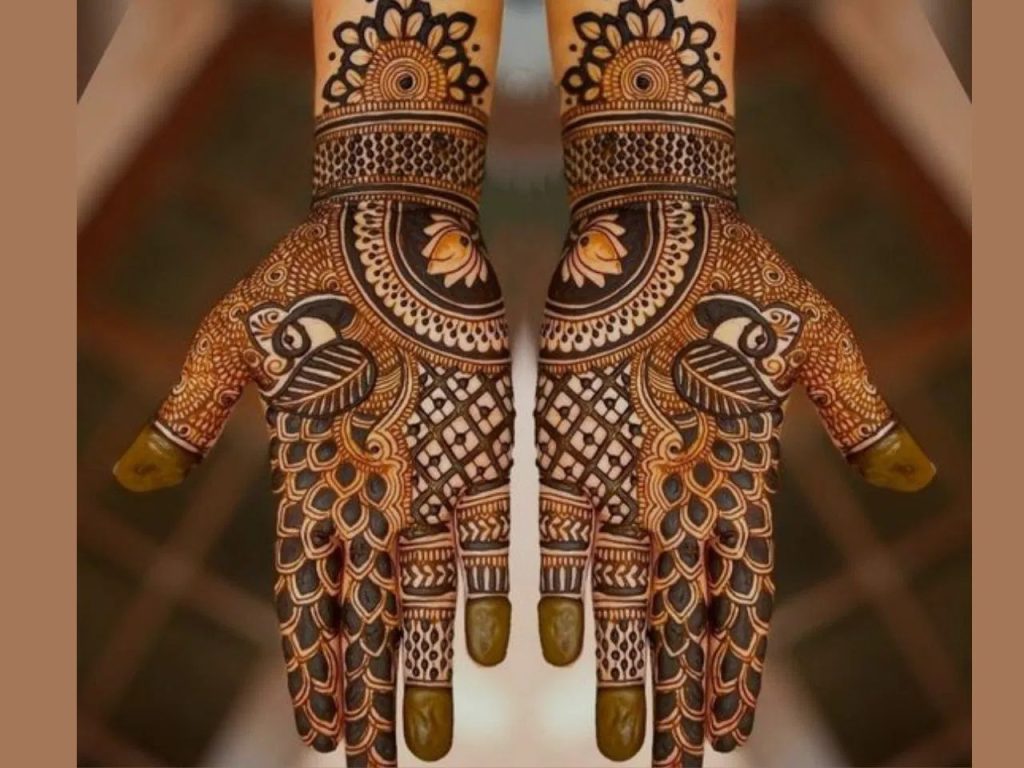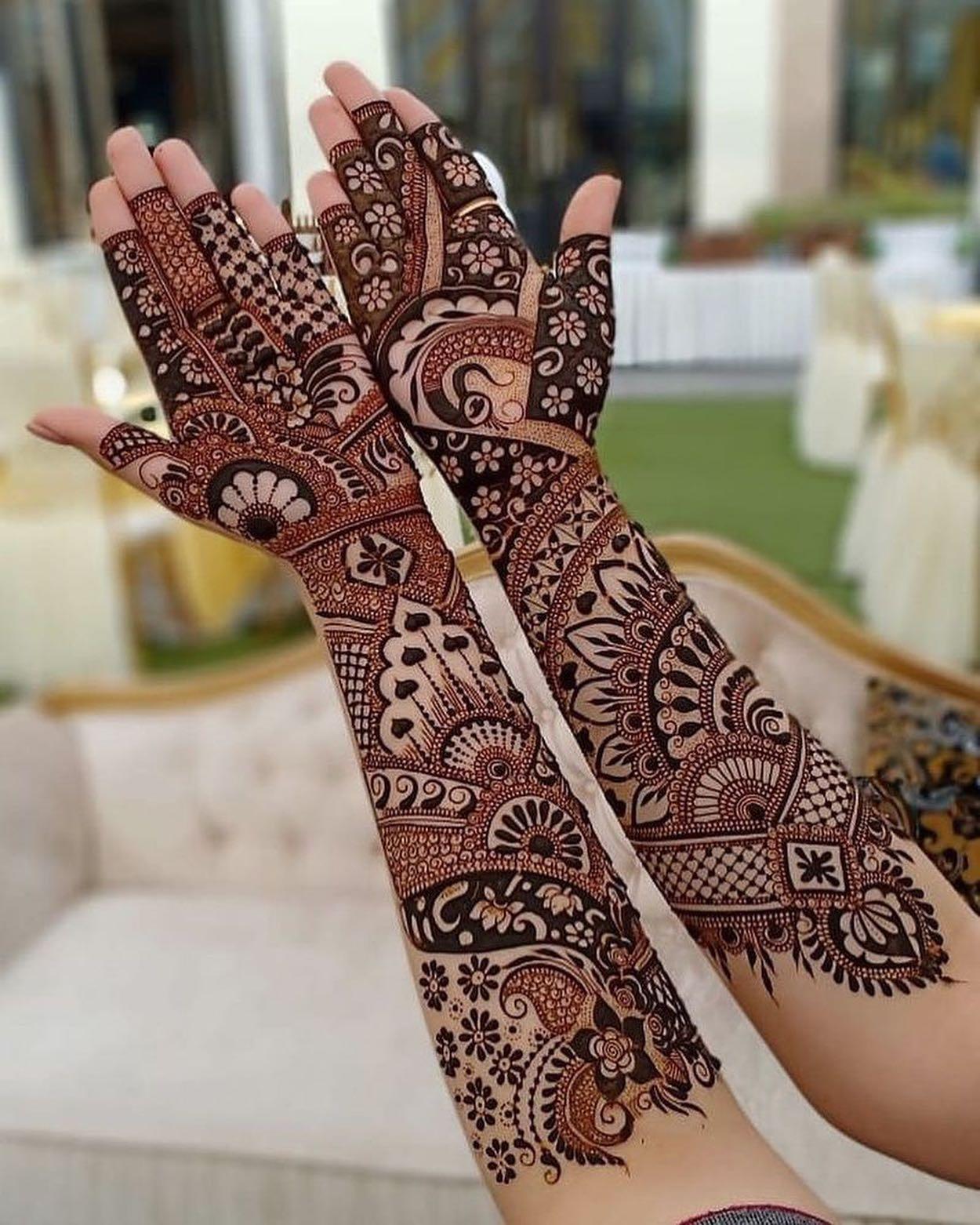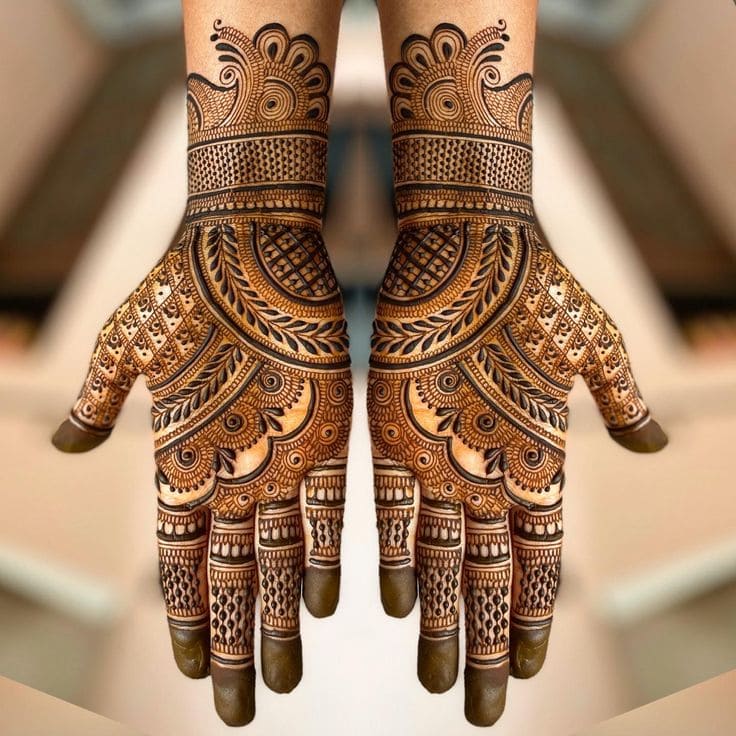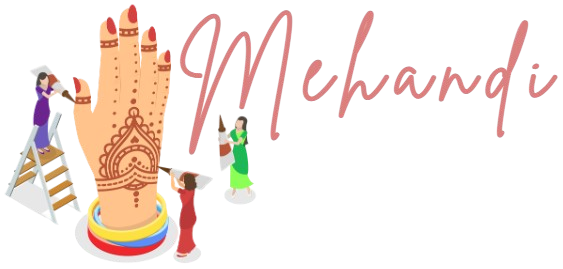Introduction
Practiced for millennia, front hand mehandi design—also known as henna—is a classic kind of body art. Made from the dried henna plant leaves, pounded into a fine powder, and combined with natural components to form a paste, it Applying this paste in complex patterns to the skin leaves a transient stain that gradually fades. Mehndi is utilized extensively for religious and cultural rites in India, the Middle East, Africa, and other areas.
Mehndi Application Guide: Step-by- Step
Use these guidelines to get a lovely and long-lasting pattern if you like to apply front hand mehandi design:
1. Mehndi Paste preparation

Sort premium henna powder to get any lumps out.
To improve the color, toss the powder with lemon juice, sugar, and essential oils—like lavender or eucalyptus.
Till the mixture takes on a smooth consistency, stir it.
Cover the paste and let the dye release after six to eight hours.
2. getting ready for application with the hands
To get any filth or grease from your hands, wash and then dry them.
To prolong the front hand mehandi design stain, lightly coat eucalyptus oil on top.
3. using Mehndi Design
Load the ready paste into a mehndi cone.
Choose a design—front hand front hand mehandi design design, mehandi design bel, or bridal bridal mehandi design—then painstakingly apply it.
Let the mehndi dry for minimum five to six hours.
4. improving color
To keep the mehandi design bel moist once it is dried, dab over it a mixture of lemon and sugar.
After a few hours, instead of washing the dried mehandi design bel with water, scrape off it.
To lighten the discoloration, dab balm or mustard oil.
India boasts how many varieties of Mehndi?
India boasts several mehandi design bel design types, each with distinct patterns and meaning:
1. Arabic Mehndi:

Open areas allow for strong floral and paisley patterns.
Popular for its simple but sophisticated appearance.
2. Mehndi Rajasthalani

incredibly finely detailed and complex, covering the hand and feet in whole.
includes typical Indian themes, peacock, elephant,
3. Mehandi Design Bel

Bel (vine) patterns running the arms or fingers.
Beautiful and appropriate for celebrations and laid-back events.
4. Bridal Bridal Mehandi Designed
the most elaborate and minute form of mehandi design bel, utilized in weddings.
Often incorporates secret names, mandalas, and the bride and groom as well as themes.
5. Karva Chauth’s Mehandi Design

particularly created for married women seeing mehandi design for karva chauth.
Features moon, diya (light), and classic symbols of love and loyalty.
mehandi design for karva chauth Customs Across Various Countries
mehandi design for karva chauth is observed all over with different customs:
1. India

Celebrated at Diwali, mehandi design for karva chauth, weddings, and other holidays.
One of the main customs, bridal mehndi stands for love and wealth.
2. Pakistan

mehandi design for karva chauth is used in pre-wedding celebrations called “Mehndi Night” among dance and music.
Eid festivities also call for mehndi application.
3. Eastern Middle Eastern Countries

For Eid celebrations and weddings.
Widely used Arabic mehndi designs have strong floral patterns.
4.Morocco
Applying henning helps ward off evil spirits.
mehandi design dikhaiye is used by women for festivities like weddings and childbirth.
5. Egypt, number five
Usually, brides henna previous to their wedding.
Ancient Egyptians also applied mehandi design dikhaiye for body art and ornamentation.
Mehndi Celebrated Most in Which Countries?
Mehndi is typically observed in:
1. India – Diwali, Weddings, Karva Chauth
2. Pakistan: Eid and Weddings
3. Bangladesh: Festive events and weddings
4. United Arab Emirates : Eid, weddings
5. Saudi Arabia: Conventions of Traditionally
6. Egypt: Traditional marriage customs both ancient and modern
7. Morocco: Celebrations and protective henna rituals
Mehndi: Why Is It Significant?
mehandi design dikhaiye has great cultural and spiritual value:
1. Representation of Richness and Luck
Brides use mehandi design dikhaiye to bless their marriage with wealth and happiness.
2. Influence of Cooling
mehandi design dikhaiye calms the body and naturally cools it, therefore lowering tension.
3. Musical Expression
It’s a creative kind of self-expression that lets people adorn their hands and feet.
4. Spiritual and conventional significance
Many societies think bridal bridal mehandi design brings good energy and wards off evil spirits.
Countries Where bridal bridal mehandi design Is Made and Styles of Design Commonly Found
bridal bridal mehandi design is rather common in several nations, each with own fashion:
Nation Mehndi Type Popular Attributes
India \bridal bridal mehandi design, Bridal RajasthaniFine patterns, full-hand designs
Pakistan Historical Mehndifloral inspirations, intricate finger patterns
United Arab EmiratesArabic Mehndi.Vibrant floral and paisley designs
Morocco.Mehndi MoroccoNative American and geometric designs
Egypt ancient Egyptian MehndiSimplified abstract and floral designs
Bangladesh Mehndi: Traditional Bangladeshi MethodStrong designs with paisley and peacock themes
Conclusion
Mehndi is a custom observed worldwide, not only body art. Every style—front hand mehandi design, mehandi design bel, or bridal bridal mehandi design—carries great cultural value.
From India to Morocco,bridal bridal mehandi design is a staple of religious events, weddings, and holidays. There are countless possibilities to investigate if you are looking for mehandi design inspiration or ideas for Karva Chauth.

